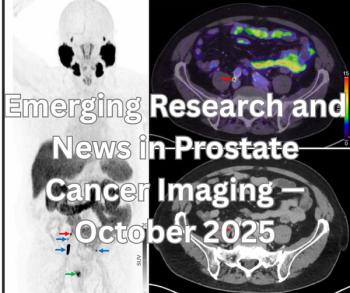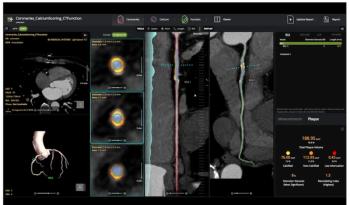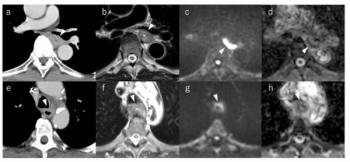
CTI Molecular Imaging seeks new ground amid PET market changes
Sales of PET and PET/CT scanners made by CTI PET Systems dropped precipitously last quarter, leading PET pioneer and part owner CTI Molecular Imaging to announce that revenues and earnings at the Knoxville, TN, company would fall well short of
Sales of PET and PET/CT scanners made by CTI PET Systems dropped precipitously last quarter, leading PET pioneer and part owner CTI Molecular Imaging to announce that revenues and earnings at the Knoxville, TN, company would fall well short of expectations. The news, delivered July 9, sent the stock plummeting to under $11 per share, an all-time low.
The bad financial news came just weeks after the June meeting of the Society of Nuclear Medicine (SNM), when CTI executive Ronald Nutt, Ph.D., described changes that ultimately will reduce the company's reliance on equipment sales by focusing on the R&D of biomarkers and the supply of radiopharmaceuticals.
A principal means for making these changes is CTI Molecular Technologies, which will focus on biomarker research and the development of promising new PET radiopharmaceuticals. The company was founded in January, but its existence was not announced publicly until the SNM meeting.
The outward signs of this metamorphosis were already visible in May, when CTI formally shut down its direct sales operation for PET products, choosing to rely instead on distribution partners (SCAN 5/18/04). The change was prompted by the realization that CTI and its principle partner in PET, Siemens Medical Solutions, had been cannibalizing each others' sales, according to Nutt, president and CEO of CTI Molecular Imaging.
"All of a sudden we woke up and found we were competing more and more with Siemens and less and less with the people we want to compete with-GE and Philips," he said.
When CTI began selling PET and PET/CT scanners directly, there was little overlap with Siemens' efforts. CTI focused on the entrepreneurial side of PET-mobile PET and freestanding clinics. Siemens addressed primarily the hospital market. But as the overall market developed, Nutt said, the line that separated the two companies began to blur.
"We had this channel conflict where we were selling the same products against each other," he said.
Most sales of CTI PET equipment will continue to be made by Siemens with equipment supplied by their joint venture, CTI PET Systems. CTI, through CPS, also provides PET scanners to Hitachi Medical Systems, which unveiled a new PET/CT hybrid at the June SNM meeting (see story this issue). But this too may change. CTI Molecular Imaging is planning to sell its interest in the CPS joint venture to Siemens, according to Nutt.
"We agreed some 15 years ago that Siemens would have the ability to buy that company, and that will be the most likely outcome in the next two years," he said.
Given this probable turn of events, CTI is aggressively repositioning itself. By the time the company sells its part of the joint venture to Siemens, Nutt hopes to have a different relationship with Siemens, this time in the development of biomarkers and probes. CTI will also hold the rights to its lutetium oxyorthosilicate detector material, which is an integral part of Siemens PET scanners. These rights will not be affected by the expected sale of CPS, he said.
"We do not plan to be in the business of supplying scanners after Siemens buys CTI PET Systems, but we do plan to continue to develop the technology and to make those developments available to Siemens and others in the industry," Nutt said.
Efforts by CTI Molecular Technologies to develop new biomarkers and probes will complement those of two other corporate holdings, CTI Mirada Solutions and Concorde Microsystems. Mirada supplies OEMs, including Siemens and Hitachi, with image processing software. Concorde, which the company acquired June 30 for $41 million cash and unregistered shares of CTI common stock, develops and manufactures miniature PET systems for preclinical animal testing.
The reorientation of the company will help the financial bottom line by eliminating the costs of supporting a direct sales force. The company can also concentrate on its PETNET business, which is flourishing with the growing demand for PET scans.
CTI predicts more than 900,000 PET scans will be performed in the U.S. this year, a 50% increase over 2003. (This number is in line with expectations by industry analyst Marvin Burns.) Based on preliminary information, the company believes FDG dose shipments during the third quarter rose 8% sequentially and 53% over the prior year's period.
In an effort to further refine its focus, CTI management has sought to tie up some loose legal ends. It settled litigation brought by GE against CTI Molecular Imaging, the PETNET Solutions radiopharmaceuticals unit, and certain employees of CTI Molecular Imaging to prevent these former GE employees from potentially disclosing or using GE confidential information (SCAN 6/14/04).
CTI is also pursuing a legal solution to litigation brought by a former employee, Behrouz Amini, who claimed in a letter distributed to the press at the SNM meeting that he is seeking damages in excess of $100 million. Mike Lawless, senior director of investor relations, confirmed that Amini is suing the company but said the damages are substantially less than $100 million, according to documents provided to CTI lawyers.
Two suits, one filed in December 2001 and the second in January 2002, were consolidated last August, Lawless said. Total damages being sought in the two cases were only about a tenth of the amount Amini claims to now be seeking.
"He is in the process of amending the damages but that action has not been taken yet in the court," Lawless said.
In the end, CTI's success will hinge not on what happens in or out of court but on the continuing demand for PET systems and PET radiopharmaceuticals, especially in the near term. There are signs that the market is only partly cooperating with CTI.
From 2002 to 2003, sales of PET scanners rose 18.6% in the U.S. and 32.8% worldwide, according to industry analyst Marvin Burns. This represents a slowdown in PET orders in the U.S., however, as users attempt to utilize existing capacity more efficiently.
In its most recent financial disclosure, the company predicted that earnings per share in the third quarter, ended June 30, would range between 2¢ and 4¢, down substantially from earlier estimates of 8¢ to 11¢. Revenues would top out at less than $90 million for the quarter, about $10 million less than expected.
The shortfalls are expected to continue in the current fiscal (fourth) quarter, as the firm forecast earnings of 17¢ to 19¢ per share on revenue of at least $120 million, both of which are below earlier expectations.
But the future may brighten, as the company reduces its reliance on PET equipment in favor of radiopharmaceuticals. PET procedure volume should rise to 2.1 million by 2010, according to Burns. PET has become more accessible to a wider range of physicians, increasing the referral base and stimulating sales of FDG while reducing the price per dose.
FDG sales of $193.2 million in 2003 were up 14% from $169.4 million in 2002. These sales should reach $521.8 million by 2010, notwithstanding the diminishing price per dose, Burns said. These estimates are conservative, based on present utilization, and could go up if new applications are adopted.
Nutt hopes to accomplish exactly that by accelerating the development of new applications through the company's subsidiary CTI Molecular Technologies, as he reinvents the company and PET technology.
Newsletter
Stay at the forefront of radiology with the Diagnostic Imaging newsletter, delivering the latest news, clinical insights, and imaging advancements for today’s radiologists.
































